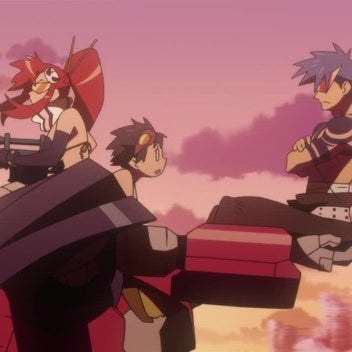
What was the first anime to come to the US?
While animated shows had already found some popularity in Japan, the first major hit that made its way to the USA was Osamu Tezuka’s Astro Boy (known as Mighty Atom in Japan). The show premiered in Japan on January 1, 1963. In September of that year, NBC began showing an English adaptation of the series that was produced by Fred Ladd.
Are there any anime made before their own Mangas?
From Dragon Ball GT to Kill la Kill, here are 10 animes that were made before their own mangas. Surprisingly, there have been tons of anime or manga to come out after an original video game or visual novel, but the phenomenon happens in tons of different permutations.
Why did anime get banned in America?
Character names were changed and certain pieces of content were either altered or removed due to American audiences’ sensitivity to violent or suggestive content. This was a standard practice for most anime series as they made their way overseas and it was a practice that wouldn’t change for quite some time.
How did America react to anime in the 1960s?
In the 1960s, Astro Boy, Speed Racer and Kimba the White Lion were introduced to the US and were received positively. However audiences didn't see them as Japanese, possibly because they resembled most American cartoons of the time. If you were an anime fan in America at the time you would have to rely on fansubs.

What was the industry of anime in the 1990s?
It’s impossible to catalog the numerous series and films that made their way overseas in the 1990s. Anime was a fertile market for American distributors whose only production costs involved re-recording/rewriting dialogue as well as editing content and timing. Many television stations like the Sci-Fi Channel and Cartoon Network would run anime shows in specialized blocks aimed at older children and teenagers. Of these, Cartoon Network’s Toonami was the most influential in bringing several action-oriented anime shows to the widest possible audience.
What anime was released in 1984?
Anime movies in Japan were taking off and the ones that made their way to America changed the game. Hayao Miyazaki was coming into his prime, though his big film, 1984’s Nausicaä of the Valley of the Wind , would first see distribution in the states as a heavily edited version called Warriors of the Wind.
What was the success of Astro Boy?
The success of Astro Boy led to a surge of anime shows being repurposed for American audiences. Fred Ladd also adapted another of Tezuka’s works, Kimba the White Lion , in 1966. Many have cited Kimba and its success as a potentially unintended inspiration for Disney’s The Lion King.
What was the golden age of anime in the 1980s?
The 1980s – Robots, Robots, and More Robots (and Akira) The 1980s would become the golden age of anime as clear fandoms for the art form began to arise. In Japan, the otaku subculture started to grow.
What was the last anime of the 60s?
The final big anime hit of the ’60s in America was Speed Racer in 1967. Producer Peter Fernandez, who had ghost-written American scripts for Astro Boy and Gigantor, took over adaptation duties and provided a number of voices for the characters.
What were the biggest anime hits in the 1990s?
The 1990s also provided Americans with their biggest anime cultural effects. Shows like Sailor Moon , Dragon Ball Z , and Gundam Wing were not only big hits in Japan but in America as well. The influx of other elements of Japanese pop culture began to take hold.
What was the most popular anime of the 70s?
The other seminal anime series for American audiences of the ’70s was Battle of the Planets ( Science Ninja Team Gatchaman in Japan). The superhero/sci-fi series was immensely popular and was re-adapted in the 1980s as G-Force.
How many animes were made before their own manga?
From Dragon Ball GT to Kill la Kill, here are 10 animes that were made before their own mangas. Surprisingly, there have been tons of anime or manga to come out after an original video game or visual novel, but the phenomenon happens in tons of different permutations. Everyone assumes that most of the time an adaptation ...
What is the name of the anime that follows Dandy?
4 Space Dandy. Another entry on this list with an anime directed by Shinichiro Watanabe, Space Dandy is a comedy sci-fi series that came out in 2014. It follows the adventures of Dandy, who's an alien hunter in space, looking for alien species that humanity has never seen before.
How many episodes are there in Serial Experiments Lain?
Serial Experiments Lain is to this day only a cult classic of the cyberpunk genre. It's a 1998 anime animated by Triangle Staff. It was only 13 episodes but did a great job at tackling high concepts like the nature of reality, the implications of the early internet, Jungian psychology.
What is Angel Beats based on?
Angel Beats! is an anime developed by Aniplex and P.A. Works and is based on a story and character design by two animators who work for the visual novel developer Key. It takes place in a high school setting, with the twist being that the students attending the high school are dead and doing their best to figure out how they died and why they're there.
When did the anime boom start?
These anime series have been shown and have achieved varying levels of popularity in the United States and Canada, this is contributed to the era known as the "anime boom" which lasted from the mid-1990s to mid-2000s. In the United States, most anime can be seen televised on channels, with channels such as Adult Swim 's Toonami block, ...
What was the anime industry in the 1990s?
The 1990s, was the period in which anime reached mainstream popularity in the U.S. market and the terms "anime" and "manga" became commonly well known (ultimately replacing the former majorly known term "Japanimation"). Companies such as FUNimation Productions, Bandai Entertainment, 4Kids Entertainment, Central Park Media, Media Blasters, Saban Entertainment, Viz Video, Pioneer LDC and ADV Films began licensing anime in the United States.
What was the most popular anime in the 1980s?
In the mid-1980s super robot and space opera anime was very popular, series such as Voltron, Transformers and Robotech were successful in ratings and also commercial successes through selling merchandise.
What channel did the Superbook anime come on?
Basic cable provided a frequent broadcast outlet for juvenile-targeted anime during the 1980s, in particular Nickelodeon and Christian Broadcasting Network Cable (now Freeform ). In the early 1980s, CBN aired an English dub of the Christian-themed anime series Superbook and The Flying House, as well as the girls' drama series Honey Honey ...
What anime is 4kids?
After the success of Pokémon in the late 1990s, 4Kids Entertainment continue to license anime titles and target them towards children such as the Yu-Gi-Oh! franchise, Sonic X, Magical DoReMi, Mew Mew Power, Shaman King, Kirby Right Back At Ya!, Dinosaur King and Ultimate Muscle.
Where can I watch anime?
In the United States, most anime can be seen televised on channels, with channels such as Adult Swim 's Toonami block, and Toku airing anime targeted toward young adults to adult audiences, and with channels such as Disney XD, and Nicktoons airing anime targeted toward children audiences. Anime can also be viewed online legally on streaming ...
Why didn't people see Astro Boy as Japanese?
However audiences didn't see them as Japanese, possibly because they resembled most American cartoons of the time. If you were an anime fan in America at the time you would have to rely on fansubs.
A brief introduction
Before we commence with the historical part, let us just briefly explain the two terms we’re going to talk about.
The history of manga – First Manga
Manga has a very rich and interesting history, but its exact origins – at least before the appearance of modern manga – aren’t completely clear.
Was Katsudō Shashin really the first – A history of Japanese animation – First Anime
Although likewise not completely clear, the history of anime enables us to give a more precise answer when the animation is concerned.
When did anime come out?
The 1980s brought anime to the home video market in the form of original video animation (OVA), as shows were shifting from a focus on superheroes to robots and space operas, with original video animation (OVA or OAV) coming onto the market in 1984, with a range in length.
When did anime become mainstream?
In the 1980s , anime became mainstream in Japan, experiencing a boom in production with the rise in popularity of anime like Gundam, Macross, Dragon Ball, and genres such as real robot, space opera and cyberpunk.
What was the anime boom of the 1980s?
The success of the theatrical versions of Yamato and Gundam is seen as the beginning of the anime boom of the 1980s, and of " Japanese Cinema 's Second Golden Age". A subculture in Japan, whose members later called themselves otaku, began to develop around animation magazines such as Animage and Newtype.
What was the first anime?
In the 1960s, the unique style of Japanese anime began forming, with large eyed, big mouthed, and large headed characters. The first anime film to be broadcast was Moving pictures in 1960. 1961 saw the premiere of Japan's first animated television series, Instant History, although it did not consist entirely of animation. Astro Boy, created by Osamu Tezuka, premiered on Fuji TV on January 1, 1963. It became the first anime shown widely to Western audiences, especially to those in the United States, becoming relatively popular and influencing U.S. popular culture, with American companies acquiring various titles from Japanese producers. Astro Boy was highly influential to other anime in the 1960s, and was followed by a large number of anime about robots or space. While Tezuka released many other animated shows, like Jungle Emperor Leo, anime took off, studios saw it as a commercial success, even though no new programs from Japan were shown on major U.S. broadcast media from the later 1960s to late 1970s. The 1960s also brought anime to television and in America.
What was the first magical girl anime?
What is noted as the first magical girl anime, Sally the Witch, began broadcasting in 1966. The original Speed Racer anime television began in 1967 and was brought to the West with great success.
What was the name of the spaceship that was adapted into Star Blazers?
Space Battleship Yamato and The Super Dimension Fortress Macross also achieved worldwide success after being adapted respectively as Star Blazers and Robotech . The film Akira set records in 1988 for the production costs of an anime film and went on to become an international success.
What was the Japanese lantern show called?
Before the advent of film, Japan already had a rich tradition of entertainment with colourful painted figures moving across the projection screen in utsushi-e (写し絵), a particular Japanese type of magic lantern show popular in the 19th century.

Popular Posts:
- 1. where can i watch the founder of diabolism anime
- 2. how to make anime edits on computer
- 3. where can i watch bofuri anime
- 4. what is good anime to watch on netflix
- 5. who is 02 anime
- 6. a silent voice anime kaizoku
- 7. how to draw cute anime couples
- 8. how to make your own anime cardboard cutout
- 9. how to draw anime book
- 10. how to make an anime character in adobe illustrator